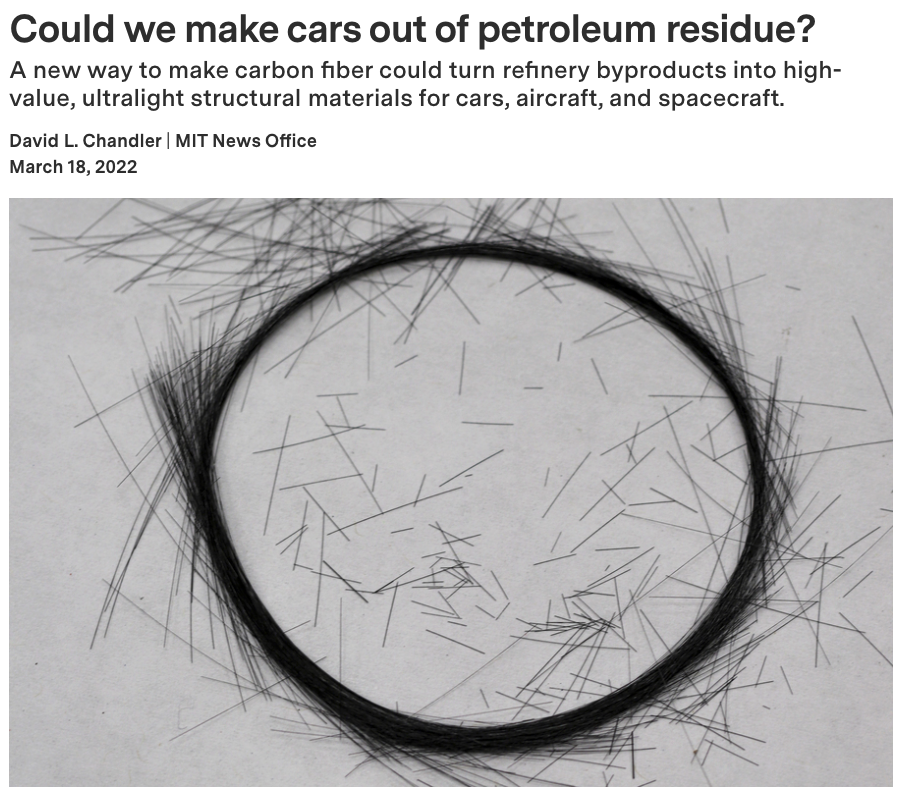
As the world struggles to improve the efficiency of cars and other vehicles in order to curb greenhouse gas emissions and improve the range of electric vehicles, the search is on for ever-lighter materials that are strong enough to be used in the bodies of cars.
Lightweight materials made from carbon fiber, similar to the material used for some tennis rackets and bicycles, combine exceptional strength with low weight, but these have been more expensive to produce than comparable structural elements made of steel or aluminum. Now, researchers at MIT and elsewhere have come up with a way of making these lightweight fibers out of an ultracheap feedstock: the heavy, gloppy waste material left over from the refining of petroleum, material that refineries today supply for low-value applications such as asphalt, or eventually treat as waste.
Not only is the new carbon fiber cheap to make, but it offers advantages over the traditional carbon fiber materials because it can have compressional strength, meaning it could be used for load-bearing applications. The new process is described today in the journal Science Advances, in a paper by graduate student Asmita Jana, research scientist Nicola Ferralis, professor Jeffrey Grossman, and five others at MIT, Western Research Institute in Wyoming, and Oak Ridge National Laboratory in Tennessee.
The research began about four years ago in response to a request from the Department of Energy, which was seeking ways to make cars more efficient and reduce fuel consumption by lowering their overall weight. “If you look at the same model car now, compared to 30 years ago, it’s significantly heavier,” Ferralis says. “The weight of cars has increased more than 15 percent within the same category.” (continued)
Recent Comments